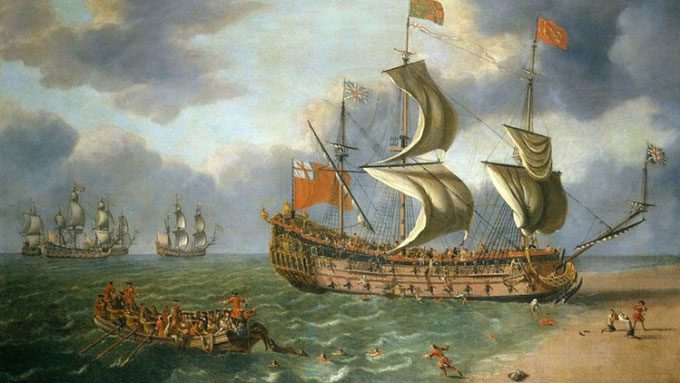After 15 years of dedicated research, the truths about a ghost ship buried halfway beneath the seabed are gradually being revealed.
According to Science Daily, the Gloucester, a royal warship, went missing on May 6, 1682. It wasn’t until 2007 that three divers—brothers Julian and Lincoln Barnwell along with their friend James Little—discovered it after four years of searching.
Archaeologists and maritime scientists, led by Professor Claire Jowitt from the University of East Anglia (UEA), have been studying the shipwreck.

Researchers working on the ghost ship sunk off the eastern coast of England – (Photo: UEA)

Simulation of the Gloucester warship. (Photo: Wikipedia)
According to a UEA news release, the ghost ship Gloucester represents a significant shift in England’s political history at the time, as it carried the future king of England—Duke of York and Albany James Stuart—right in the midst of a major political and religious crisis.
“When we decided to search for Gloucester, we had no idea how important it was in history. We read that the Duke of York was on board, but that was about it.” – Professor Jowitt stated.
There are many other shipwrecks with cannons surrounding the area, so researchers spent considerable time determining whether this was indeed the Gloucester, while also protecting the ghost ship. This discovery has remained undisclosed for the past 15 years.
The artifacts within the ghost ship are remarkably well-preserved, including clothing, footwear, navigational equipment, and naval gear, along with many personal belongings and bottles of wine.
One of the most valuable items is a glass bottle bearing the seal representing the Washington family of the first American president.
The accompanying historical research project, funded by the Leverhulme Trust and led by Professor Jowitt, will explore not only the navigational errors of the ship but also the conspiracy theories surrounding the tragedy, as well as its political repercussions.
The tragedy had a profound impact on the survivors and is regarded as a dark milestone in England’s history, with approximately half of those on board losing their lives.


















































